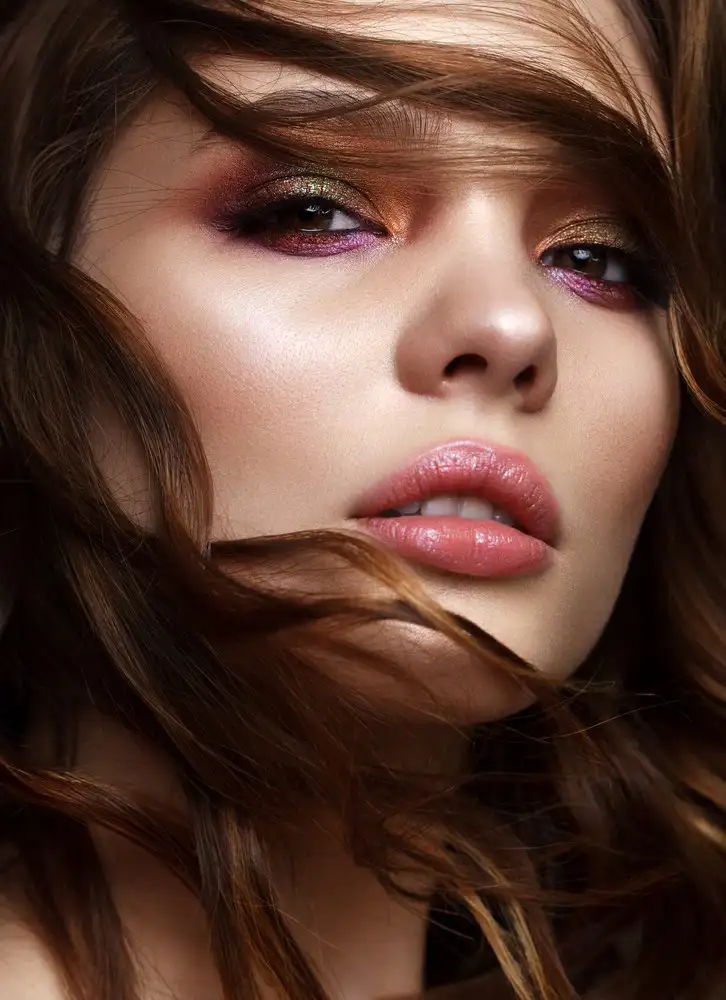Improve Your Circulation with Varicose Veins Treatment in Riyadh
Read in Arabic
Varicose veins are a common condition that affects millions of people worldwide. These enlarged and twisted veins, most commonly found in the legs, can cause discomfort and pain, as well as other more serious health issues. If you’re suffering from varicose veins, you’re not alone. There are a variety of treatment options available to help alleviate your symptoms and improve your quality of life. In this article, we’ll explore the causes, treatments, and preventative measures for varicose veins, so you can take control of your health and feel your best.
Procedure Time
30 - 60 Mins
Downtime
36 Hours
Back to Work
1- 2 Days
Results
3 - 4 Months
What are Varicose Veins?
Varicose veins are enlarged, twisted veins that commonly appear on the legs and feet. They occur when the valves in the veins that help blood flow back to the heart become weak or damaged, causing blood to pool in the veins and stretch them out. Varicose veins can cause discomfort, pain, and aching, and they may also be unsightly. They are more common in women than men and can be caused by factors such as age, pregnancy, obesity, and genetics. While they are typically not a serious health concern, they can sometimes lead to more severe issues if left untreated.
Varicose veins treatment typically involves procedures aimed at improving blood flow in the affected veins, reducing symptoms, and preventing complications. The treatment options depend on the severity of the condition and may range from lifestyle changes to minimally invasive procedures to surgery.
Varicose veins treatment Before and After
Here you can clearly see the before and after difference of varicose veins. If you want to know more, get yourself a free consultation now at Enfield Royal Saudia.

Who can develop Varicose Veins?
Varicose veins can occur in anyone, but some people are more likely to develop them than others. Women are more prone to varicose veins than men, and the risk increases with age. Other factors that may increase the likelihood of developing varicose veins include:
- Genetics: If your parents or close family members have varicose veins, you may be more likely to develop them.
- Pregnancy: The increased pressure on the veins in the pelvis and legs during pregnancy can lead to varicose veins.
- Obesity: Excess weight can put more pressure on the veins in your legs, making them more likely to become varicose.
- Standing or sitting for long periods: Jobs or activities that require prolonged sitting or standing can increase the risk of developing varicose veins.
- Previous leg injuries: Injuries to the legs can damage the veins and increase the risk of varicose veins.
What causes Varicose Veins?
Here are some common causes of varicose veins:
- Weak or damaged valves in the veins, which can cause blood to pool in the veins and lead to swelling and bulging
- Aging, which can cause the veins to lose elasticity and weaken over time
- Pregnancy, due to increased pressure on the veins in the pelvic area
- Obesity or being overweight, which can put extra pressure on the veins
- Family history of varicose veins, as the condition can be hereditary
- Prolonged periods of standing or sitting, which can put extra pressure on the veins and reduce blood flow.
Who needs Varicose Veins Treatment?
Varicose veins treatment may be necessary for individuals who experience symptoms such as pain, swelling, fatigue, or cramping in their legs or feet. Treatment may also be recommended for those who have cosmetic concerns about the appearance of their varicose veins. In some cases, varicose veins can lead to more serious complications, such as skin ulcers, blood clots, or bleeding, and treatment may be necessary to prevent these complications from occurring. Additionally, individuals with a history of blood clots or circulation problems may be advised to seek treatment for varicose veins to reduce their risk of developing further health issues. The need for treatment will depend on the severity of the varicose veins and the individual’s overall health and symptoms.
Where do Varicose Veins occur the most?
Varicose veins can occur in any superficial vein in the body, but they are most commonly found in the legs and feet. This is because the veins in the lower body have to work harder to pump blood back up to the heart against gravity. The veins in the legs also have to withstand greater pressure due to the weight of the body. As a result, the valves in these veins can become weakened or damaged, causing blood to pool and the veins to stretch and twist. Varicose veins may appear as bulging, twisted, or rope-like veins on the legs or feet, and they may be accompanied by symptoms such as pain, swelling, and fatigue.
Procedure of Varicose Veins Treatment
The process of varicose veins treatment procedure will depend on the severity of the veins and the chosen treatment method. Here are some common treatment options for varicose veins:
Endovenous Laser Treatment (EVLT)
This minimally invasive procedure involves inserting a laser fiber into the affected vein and delivering energy to seal the vein shut. The blood is then rerouted through nearby healthy veins.
Sclerotherapy
This involves injecting a chemical solution into the vein, causing it to scar and close. The blood is then rerouted through nearby healthy veins.
Vein Stripping
This is a surgical procedure that involves making small incisions in the skin and removing the affected vein. This is typically done in cases where the vein is large and causing significant symptoms.
Radiofrequency Ablation
This involves using radiofrequency energy to heat and close the affected vein. The blood is then rerouted through nearby healthy veins.
After the procedure, compression stockings may be worn to help with healing and to prevent blood clots. Patients may also be advised to avoid strenuous activity for a period of time and to elevate their legs as much as possible to reduce swelling.
Varicose Veins Post Operative Care
Post-operative care for varicose veins treatment may vary depending on the specific treatment method used, the severity of the condition, and other individual factors. However, here are some common post-operative care instructions that patients may receive:
- Compression stockings: Patients may be advised to wear compression stockings for a period of time after the procedure to help promote healing and reduce swelling.
- Walking: Patients are often encouraged to walk around as soon as possible after the procedure to improve blood flow and prevent blood clots.
- Avoiding strenuous activity: Patients may need to avoid heavy lifting, strenuous exercise, and other activities that could strain the affected area for a period of time.
- Elevating legs: Elevating the legs above the level of the heart can help reduce swelling and promote healing.
- Medications: Patients may be prescribed medications to help manage pain and prevent blood clots.
- Follow-up appointments: Patients will typically have follow-up appointments with their healthcare provider to monitor their progress and ensure that there are no complications.
- It’s important for patients to follow all post-operative care instructions carefully to ensure optimal healing and a successful outcome.
What are the benefits of Varicose Veins Treatment?
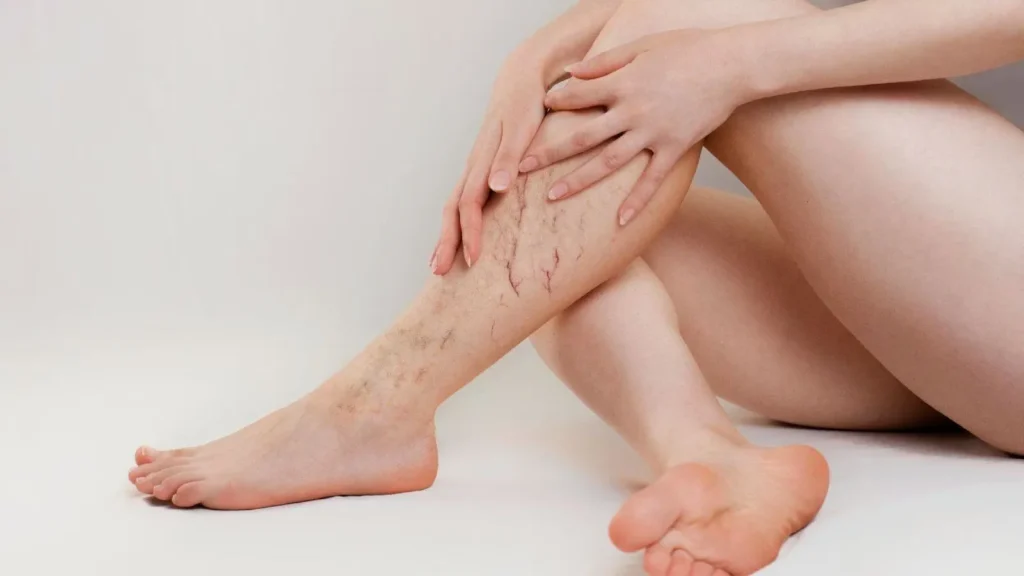
Here are some potential benefits of varicose veins treatment:
- Improved circulation: Treating varicose veins can help improve blood flow and circulation in the affected area, which can reduce symptoms like swelling, pain, and cramping.
- Reduced risk of complications: Varicose veins can lead to more serious complications like blood clots and skin ulcers. Treating varicose veins can help reduce the risk of these complications.
- Improved appearance: Varicose veins can be unsightly, and treating them can improve the appearance of the affected area.
- Reduced discomfort: Varicose veins can be painful and uncomfortable. Treating them can help reduce discomfort and improve quality of life.
- Faster recovery: Modern varicose veins treatments are minimally invasive and typically involve shorter recovery times than traditional surgical treatments.
Risks of Varicose Veins
Here are some potential risks associated with varicose veins:
- Blood clots: Blood clots can form in the affected veins, which can be dangerous if they break loose and travel to other parts of the body.
- Skin ulcers: Varicose veins can cause skin ulcers, which are open sores that can be difficult to heal and can become infected.
- Bleeding: Varicose veins close to the skin’s surface can be prone to bleeding if they are injured.
- Deep vein thrombosis (DVT): DVT is a potentially life-threatening condition that occurs when a blood clot forms in the deep veins of the body, often in the legs.
- Superficial thrombophlebitis: This is a type of blood clot that forms in a vein just below the skin’s surface. While not usually serious, it can be painful and uncomfortable.
How can you prevent Varicose Veins?
Here are some of the steps to prevent varicose veins
- Exercise regularly.
- Maintain a healthy weight.
- Elevate your legs.
- Wear compression stockings.
- Avoid standing or sitting for long periods.
- Take breaks to move around.
- Avoid tight clothing and high heels.
- Eat a healthy diet.
- Stay hydrated.
- Avoid crossing your legs while sitting.
Varicose Veins vs Spider Veins
Varicose veins and spider veins are both types of veins that can be seen under the skin, but they have some differences:
Varicose Veins
- Larger and more swollen than spider veins
- Typically occur in the legs, but can also occur in other parts of the body
- Can cause discomfort, pain, and swelling
- Can be a sign of a more serious underlying condition.
Spider Veins
- Smaller and more delicate than varicose veins.
- Usually occur on the face and legs.
- Are usually more of a cosmetic concern than a medical one.
- Are often painless.
Both conditions can be treated using similar methods, but it’s important to get an accurate diagnosis to determine the best course of treatment.
Cost of Varicose Veins in Riyadh
The cost of varicose veins treatment in Saudi Arabia can vary depending on factors such as the severity of the condition, the type of treatment needed, and the healthcare provider performing the procedure.
It is important to check with your healthcare provider or consult with us to determine the specific cost and coverage for your individual situation.
FAQs.
Varicose veins are a relatively common condition, affecting up to 30% of adults. Women are more likely to develop varicose veins than men, and the risk increases with age. Varicose veins can occur in any part of the body, but are most commonly found in the legs and feet. While varicose veins can be unsightly and uncomfortable, they are usually not a serious health concern. However, in some cases they can cause complications such as ulcers or blood clots, so it is important to seek treatment if you are experiencing symptoms.
Varicose veins can cause symptoms such as aching, throbbing, or cramping in the legs, swelling in the legs and ankles, a feeling of heaviness in the legs, and skin changes or sores near the affected veins.
Varicose veins are usually diagnosed by physical examination and medical history. Your doctor may also order tests such as a duplex ultrasound to confirm the diagnosis.
No, there are several treatment options available for varicose veins, including minimally invasive procedures such as endovenous laser treatment or sclerotherapy.
Varicose veins treatment can involve some discomfort or pain, but it depends on the specific type of treatment used. Endovenous laser therapy and radiofrequency ablation are minimally invasive procedures that usually require only local anesthesia and cause minimal pain. Sclerotherapy and vein stripping procedures can cause more discomfort and may require general anesthesia. Your doctor can help you understand what to expect during and after the procedure and how to manage any discomfort or pain that may occur.
Relevant Treatments.
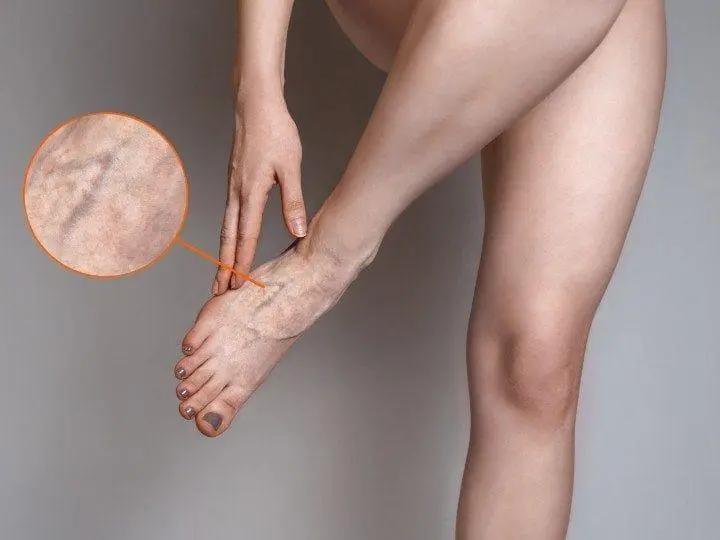
Spider Veins Removal
Spider veins, also known as thread veins, are fine, web-like streaks or networks that can appear on the face, thighs, and legs. more frequently occurs in women than in men. In actuality, they affect females twice as frequently as they do males.The most frequent cause of thread veins is...
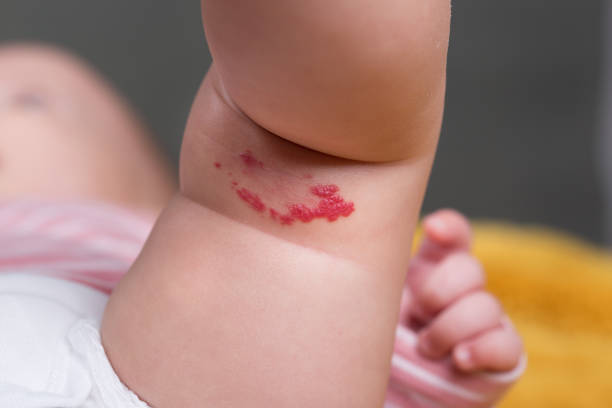
Hemangiomas Treatment
Hemangiomas are tumors that are inherited or congenital masses that appear throughout the early years of life. The principal causes of hemangiomas include the following: Hemangiomas arise when a pregnant mother's placenta experiences aberrant blood vessel clustering or...
Relevant Posts.
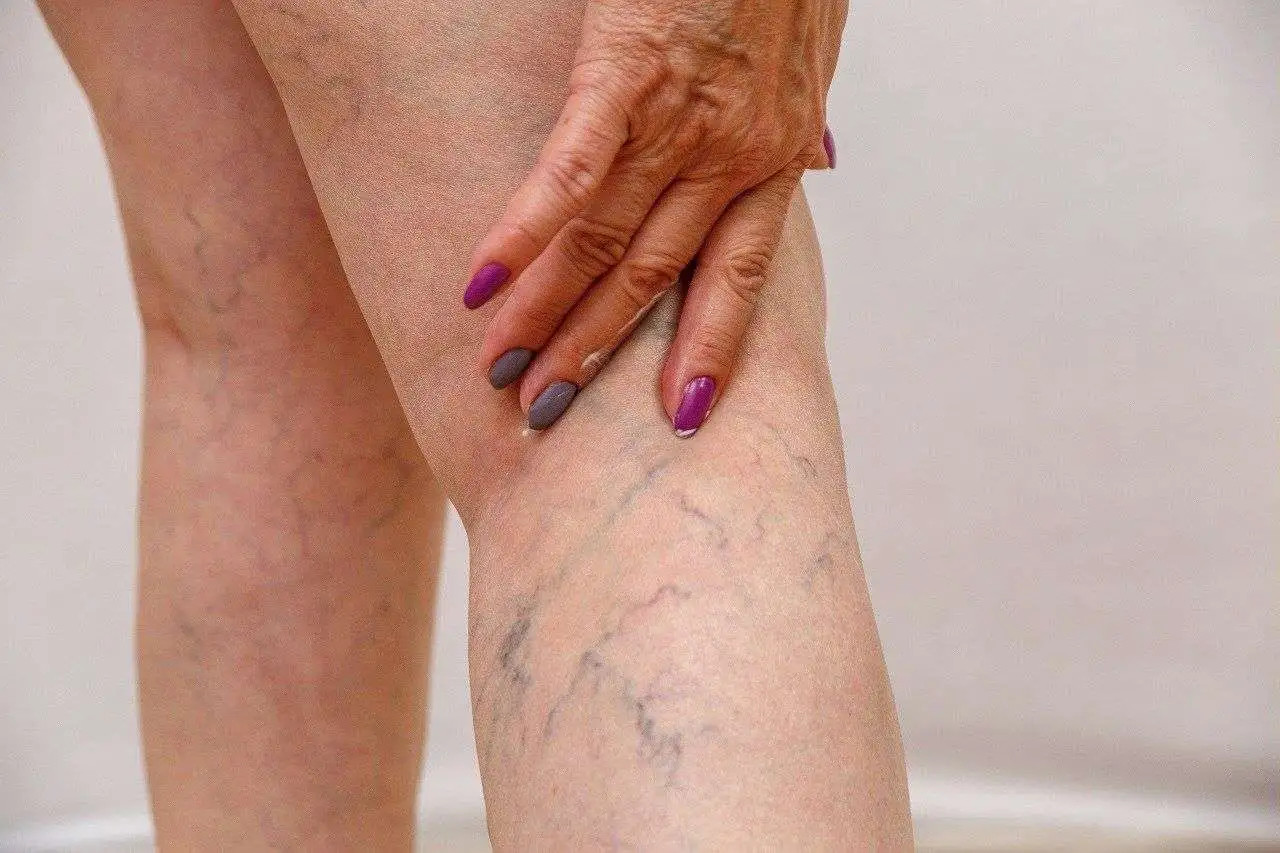
Varicose Veins Treatment Price in Riyadh
Varicose veins, though often considered a cosmetic concern, can lead to discomfort and, if left untreated, potentially serious health issues. If you’re considering treatment in Riyadh, it’s natural to have questions about the associated costs. In this blog, we’ll break down the factors that influence the price of varicose veins treatment in Riyadh. Varicose Veins Treatment Price in Riyadh. Varicose veins are enlarged, twisted veins that commonly occur in the legs and can appear blue or purple. They are often caused by weakened or damaged vein valves that fail to efficiently

